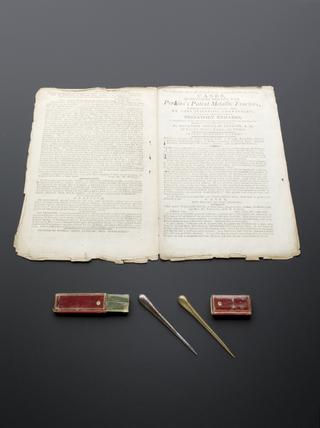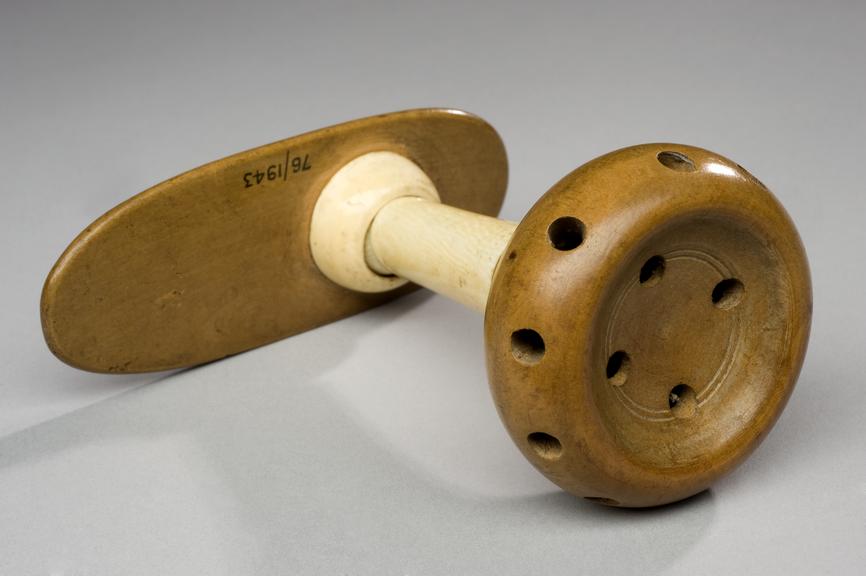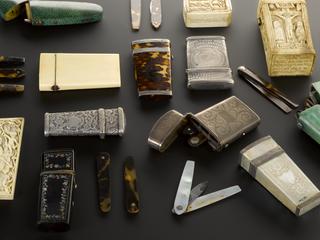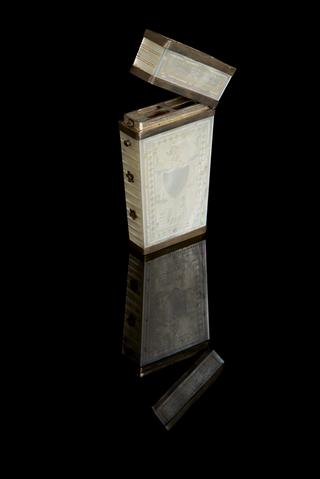
Duffin Pessary, 1880-1900
- Made:
- 1880-1900 in unknown place

Pessary, stem, Duffin, boxwood and ivory, c.1890
A prolapsed uterus is where the uterus has shifted down from its usual position in the abdominal cavity. The Duffin stem pessary supported a prolapsed uterus. The boxwood stem with cup was inserted in the vagina. The lower part of the pessary was held in place with a material strap outside the vagina.
This type of pessary was developed in 1831. Its inventor, a Mr Duffin, designed it so the stem length could be adjusted as the condition improved. The pessary also incorporates a rotating joint to follow the natural movement of the body. Vaginal pessaries became widespread in the 1800s. Many designs are still used.
Details
- Category:
- Therapeutics
- Collection:
- Sir Henry Wellcome's Museum Collection
- Object Number:
- A612170
- Measurements:
-
overall: 95 mm x 90 mm x 35 mm, .04kg
- type:
- pessary


